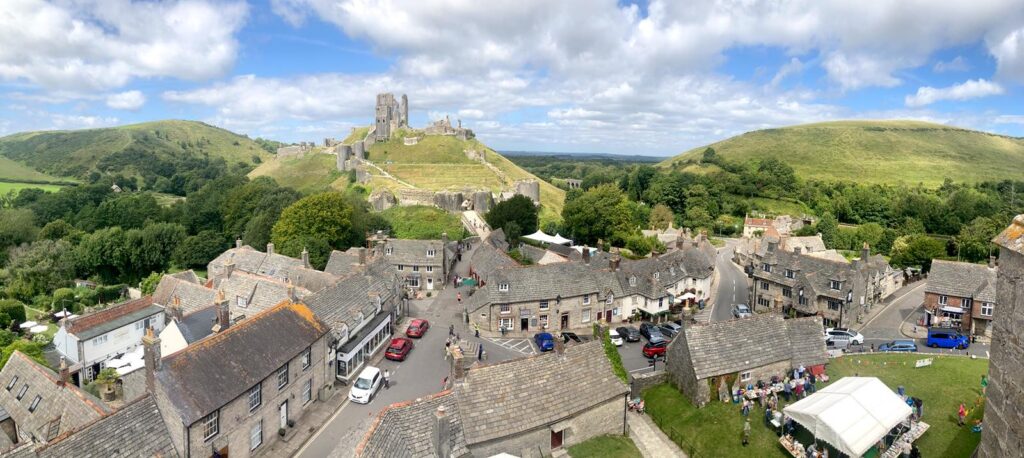If you’ve visited Corfe Castle, you might have noticed the statue of St Edward gazing out from the eastern gable of the parish church. This beautiful piece was designed by Francis Newbery—renowned artist and former Director of the Glasgow School of Art—and carved by local craftsman Walter Haysom in 1931.
St Edward the Martyr, after whom the church is named, was a young king whose tragic murder in 978 AD is said to have taken place right here in Corfe. Legend has it that his body was hidden in a humble cottage, where a miracle occurred: a blind woman discovered the king’s body and regained her sight.
Newbery, who spent his later years in Corfe Castle, was passionate about celebrating local history and culture. His design for the statue, carved from local Purbeck stone, ensures that St Edward’s story remains part of the village’s living heritage.
Next time you’re in Corfe, take a moment to look up at St Edward’s statue—a silent witness to over a thousand years of history.

Who Was St Edward the Martyr?
St Edward was King of England from 975 until his murder in 978, allegedly on the orders of his stepmother, Queen Alfthryth. According to tradition, Edward was killed at Corfe, and his body was hidden in a cottage on or near the site where the church now stands. A miracle is said to have occurred when a blind woman discovered his body and her sight was restored. St Edward’s legacy as a martyr and saint has made him a significant figure for the community (read more).
About the Artists
- Francis Newbery was a prominent British artist and educator, known for his role as Director of the Glasgow School of Art and his influence on the Arts and Crafts movement. After retiring, he settled in Corfe Castle and became closely involved in local cultural projects, including designing the St Edward statue, the village sign, and Corfe’s War Memorial.
- Walter Haysom was the skilled sculptor who brought Newbery’s design to life in stone.
Materials and Setting
The church and much of its ornamentation, including the statue, are crafted from local Purbeck stone, a fossil-rich limestone unique to the area. The statue’s placement on the eastern gable ensures it greets the rising sun, symbolising hope and renewal.
A Living Heritage
St Edward’s Church itself dates back to the 12th century and has witnessed centuries of local and national history, from medieval times through the Civil War to the present day. The statue stands as a testament to the enduring legacy of both the saint and the artists who celebrated him.
Visit the St Edwards Church website for more history and information.




